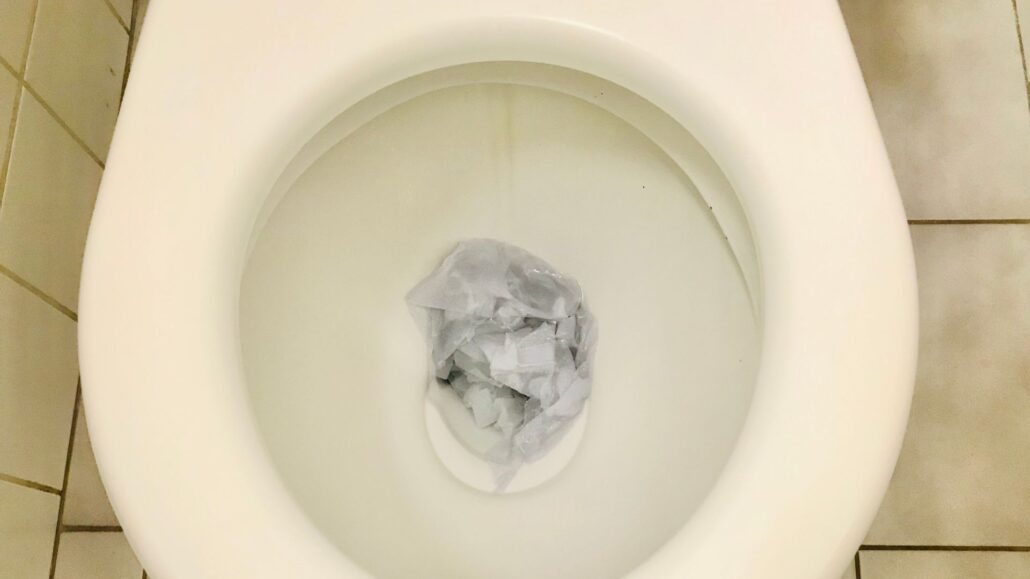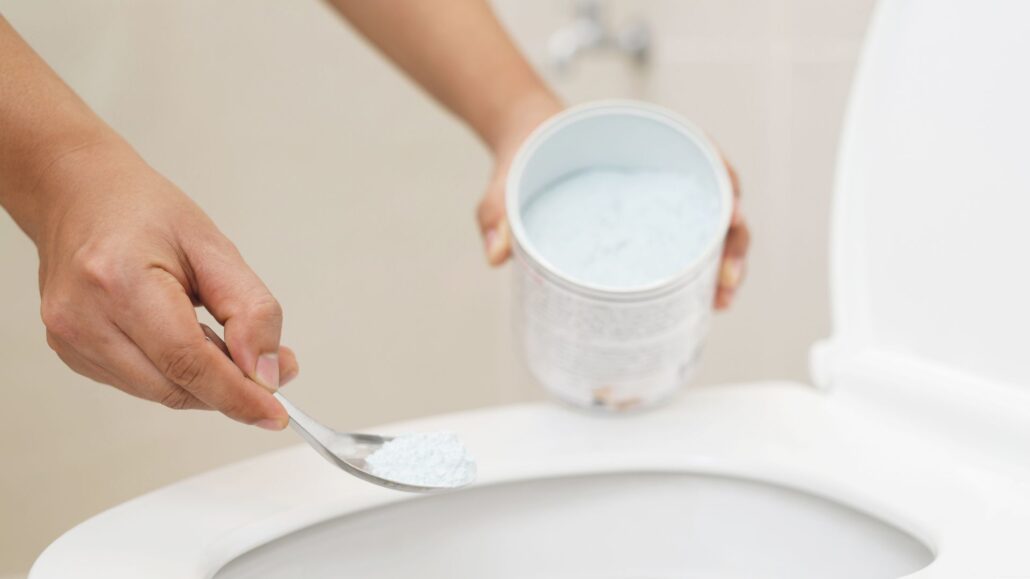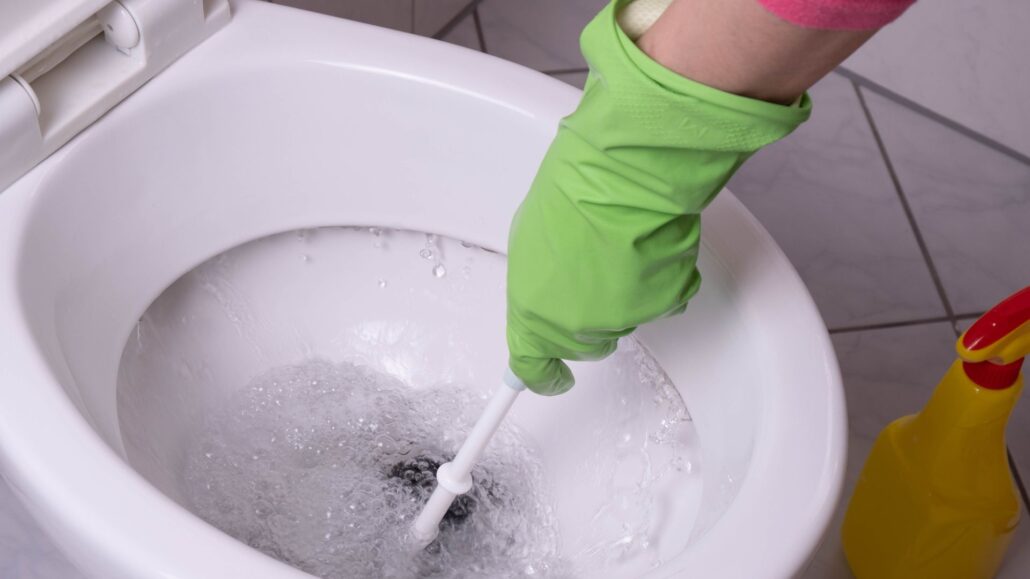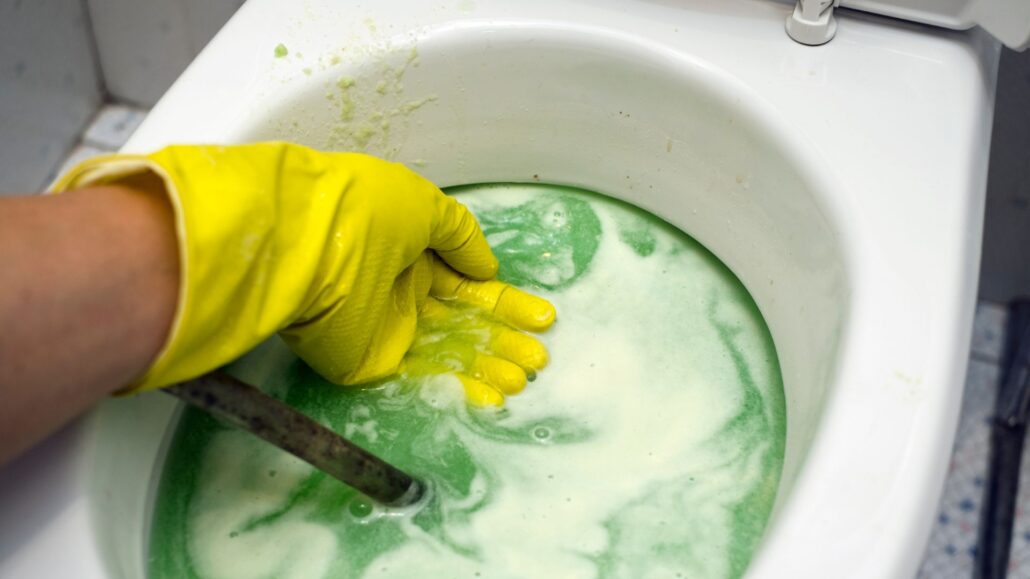Dealing with a clogged toilet can be incredibly frustrating, especially when you do not have a plunger handy to unclog the blockage quickly. Faced with the prospect of an overflowing toilet or calling an emergency plumber, many people turn to harsh chemical drain cleaners in the hopes of a quick fix.
However, these caustic products come with safety concerns. A better solution is to utilise simple, natural homemade remedies using ingredients like baking soda, vinegar, and dish soap to dissolve toilet clogs and flush everything properly.
In this article, we will explore several effective methods for unclogging a toilet without relying on harsh chemicals. Starting with common causes of toilet clogging, like excess toilet paper or flushable wipes, we will then examine how baking soda and vinegar create a chemical reaction that helps break up blockages when poured into the bowl.
Next, we’ll discuss using dish soap and hot water to lubricate the clogged drain. Other handy techniques will also be covered, like using a wire coat hanger, plunger, or drain snake to clear clogged toilets manually. With some simple homemade solutions, a bit of elbow grease, and calling a plumber for severe clogs, you can get your toilet unclogged and keep everything in the bathroom flowing smoothly.
Understanding Common Causes of Toilet Clogs
A toilet can become clogged for a variety of reasons. One of the most frequent culprits is excessive amounts of toilet paper being flushed. While most toilets can handle a normal amount of paper, flushing too much paper or very thick paper can cause build-up and block the drain. Flushable wipes, feminine hygiene products, and other items that do not break down can also accumulate to create clogs.
Additionally, toys, bath rings, coins, or other objects accidentally dropped into the toilet bowl may get lodged in the drain or pipes underneath. Over time, build-up of mineral deposits from the water supply and waste can also restrict water flow through the toilet’s plumbing system and lead to clogs. Being aware of these common clogging causes can help you prevent a minor toilet clog and recognise when professional help is needed for more severe blockages.

Baking Soda and Vinegar
One of the simplest homemade drain cleaners for unclogging a toilet is baking soda and vinegar. When baking soda and vinegar interact, a chemical reaction occurs that produces carbon dioxide gas bubbles. This fizzing and bubbling action generates pressure in the pipes to help dislodge clogs and clear blockages.
To utilise this method for unclogging a toilet, start by pouring about one cup of baking soda directly into the toilet bowl. Follow this by slowly pouring in two cups of undiluted white vinegar. Be sure to give the foam and bubbles time to work by letting the mixture sit for 30 minutes after the reaction finishes. Wearing rubber gloves and using a toilet brush or wire hanger to scrub gently at the clogged area while the bubbles can break up the blockage. Finally, flush the toilet to rinse away the loosened clog. You may need to repeat the process a few times for stubborn toilet clogs.
The benefits of using this homemade baking soda and vinegar drain cleaner are that the ingredients are very affordable and non-toxic household staples. The materials are easy to acquire and measure. It provides a more natural unclogging solution versus harsh chemical cleaners.
The downside is it takes longer to work than commercial drain openers. It also may not dissolve very substantial clogs on its own. However, minor toilet clogs can be an effective emergency fix until a plunger or drain snake can be used.

Dish Soap and Hot Water
Another homemade drain cleaner option for unclogging a toilet is dish soap(start withabout a half cup)combined with a hot water trick. The detergent in dish soap helps lubricate the clogged drain and break down blockages caused by waste build-up or objects stuck in the pipe. Pour hot water from a kettle into the toilet bowl, which helps melt and dissolve mineral deposits or other debris.
Squirt a few tablespoons of liquid dish detergent into the blocked toilet bowl to use this method. Follow this by slowly and carefully pouring in hot water from an electric kettle or pot heated on the stove. Let the soapy hot water work on the clog for about 30 minutes. Then, use a toilet plunger or wire hanger to dislodge the loosened blockage before attempting to flush again. You may need to repeat the unclogging process for severe clogs.
The benefits of this approach are dish soap and hot water is very accessible. The heat helps clear deposits while the soap lubricates the drain. It’s less abrasive and safer than chemical cleaners if kids or pets are present.
The downside is it requires more time than commercial unclogging products. It also may not break through very stubborn clogs on its own. However, dish soap combined with hot water can be an effective emergency fix for light clogs without a plunger available until a more thorough unclogging can be done.
Salt and Baking Soda
Another homemade drain cleaner option is table salt and baking soda. The salt (specifically Epsom salt) reacts with the baking soda to create a fizzing chemical reaction, similar to baking soda and vinegar. The addition of boiling water or warm water will help melt and dissolve the salt so it can more easily enter and clear clogged drains.
To use this method, mix together 1 cup of table salt and 1 cup of baking soda in a bowl. Carefully pour the salty baking soda mixture down the blocked toilet drain. Let it sit for a few minutes to start reacting. Then, pour in boiling water from a kettle over the top to help propel the ingredients down into the clog. You can optionally use a plunger or wire hanger afterwards to help dislodge the loosened blockage before flushing again. Repeat if needed for severe clogs.
The benefits of using salt and baking soda are the ingredients are inexpensive and readily available. The chemical reaction and hot water work to break down obstructions. The downside is it may take multiple applications before fully unclogging.
This method also won’t clear fully blocked drains on its own. However, for a minor toilet clog without a plunger available, combining salt, baking soda, and boiling water can provide an effective temporary fix until a more thorough unclogging can be done. The reaction and hot water help clear light blockages.
Unclogging Tools

When homemade drain cleaners fail to clear a toilet clog, a few key tools can be used to remove blockages manually. The most common is a standard toilet plunger. A plunger can dislodge obstructions when properly positioned over the drain and pushed/pulled vigorously to create suction. It’s ideal for clearing clogs near the drain opening. Cover the toilet overflow hole with a rag first to forcefully ensure a tight seal and plunge.
A stiff wire coat hanger can sometimes do the trick for clogs deeper in the pipe. Straighten the hanger and bend a small hook on one end to help snag and pull up debris. Insert it carefully and slowly twist it to clear the built-up gunk. Be cautious not to scratch the porcelain. A vacuum hose attachment can also suck out some clogged material if you can get a tight seal over the drain.
For more stubborn obstructions, a powered toilet auger or plumbing snake is heavier duty. Feed the rotating metal coil down the toilet drain to break up or grab the clog. Use care not to scratch surfaces. As a last resort when other methods fail, chemical drain cleaners contain harsh caustic chemicals to dissolve clogs quickly. However, they present safety issues if used improperly. Only use chemical cleaners as a very last option.
In general, try to avoid overusing chemical drain openers. While fast-acting, the ingredients can damage pipes or cause toxic fumes. For mild clogs, use a plunger or homemade solutions first. Save heavy-duty mechanical unclogging as a next step for substantial blockages requiring more force. Calling a professional plumber is recommended for any blocked drain issues that persist beyond DIY attempts to prevent damage and ensure proper repairs.
When to Call a Plumber
While most toilet clogs can be cleared with homemade remedies, plungers, or light drain snakes, there are times when calling a professional plumber is the best option. If you’ve tried all the DIY methods and the clog still persists, it’s likely time to bring in an expert. Recurring clog issues also typically indicate a larger problem needing repair.
Additionally, if sewage is backing up from the toilet and leaving toxic waste around the bathroom, this presents a more hazardous situation, needing immediate professional help. Pipe damage or leaks allowing water to flow in the wrong places also require a plumber’s skills.
Ongoing problems with weak flushing power, slow drainage, or low water levels likely signify obstructions too deep in the pipes for basic unclogging. Strange gurgling noises and the toilet overflowing are other signs of significant blockage.
Lastly, if there are signs of a tree root mass or a foreign object being caught in the drain, or you want a thorough preventative drain cleaning, a plumber has the special equipment required. Don’t prolong severe clog issues or allow raw sewage build-up. Calling a professional plumber at the appropriate time can prevent damage and ensure your toilet and plumbing are working properly.
Preventing Future Clogs

While dealing with an existing clogged toilet can be frustrating, taking preventative measures can help avoid blockages in the first place. Using toilet paper sparingly and not flushing paper towels or other bulky items will reduce buildup. Despite marketing claims, “flushable” wipes, feminine hygiene products and cotton balls should always go in the trash, not the toilet.
Avoid pouring fats, oils, and grease down the drain after cooking, as these can be contagious and cause obstructions. Be mindful of cleaning product ingredients as well, avoiding overly harsh chemicals. Using a snake, plunger, or natural enzymes to clean the light drain every month will keep your pipes clear.
For recurring clogs, examine if invading tree roots may be an issue and trim them back if so. Installing an internal toilet tank basket strainer can also help catch dropped items before they travel down the drain. Replacing outdated or corroded plumbing pipes may sometimes be needed to resolve chronic clogging problems fully.
Adding preventative monthly drain cleaner products containing bacteria or enzymes will safely break down organics and keep waste flowing freely. They can be a useful addition to your cleaning routine. With vigilant habits and regular light drain care, many common clogging causes can be avoided altogether. Taking preventative measures will minimise future clogs and keep your toilet working optimally.
Unclog A Toilet Clog with The Brisbane Plumbers
A clogged toilet can often be cleared using common household ingredients such as baking soda, vinegar, dish soap or salt, and homemade drain cleaners. Manual unclogging tools like plungers, coat hangers, and drain snakes are also effective in dislodging minor toilet clogs without calling a professional.
However, if DIY remedies don’t solve the clog, it’s backing up sewage, or causing ongoing issues with flushing and drainage, calling a plumber may be required. Prevent future clogs by avoiding flushing certain items, practising drain maintenance, updating old pipes when needed, and regularly using preventative enzymatic drain cleaners.
Here at The Brisbane Plumbers, we have many of experience dealing with all types of toilet clogs and drain blockages. Our licensed, bonded, and insured plumbers have the professional equipment and expertise to clear even the most stubborn obstructions.
We offer 24/7 emergency plumbing services. If you have a blocked toilet or drain that requires a more thorough unclogging, contact The Brisbane Plumbers today. We’re committed to friendly, transparent service and can get your toilet flushing freely again in no time.
